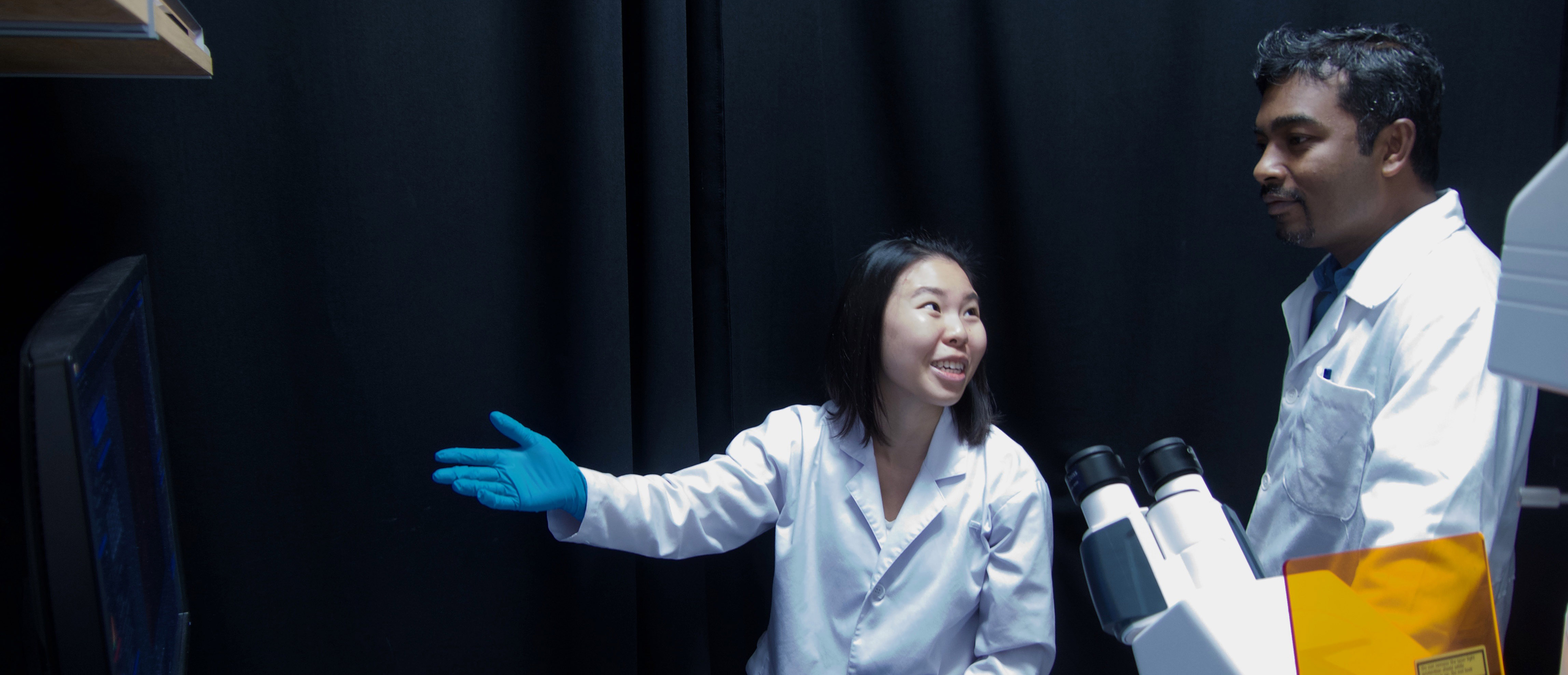Modelling human diseases: Yale-NUS student publishes commentary with her research mentor

Last December, Lim Chu Hsien (Class of 2018) published her first research commentary in the peer-reviewed Journal of Developmental Biology. Titled ‘Modeling Alzheimer’s and Other Age Related Human Diseases in Embryonic Systems’, the article (open access) proposed employing a multi-model approach that takes advantage of different animal systems used in the laboratory simultaneously to study age-related human diseases, such as Alzheimer’s disease.
Chu Hsien co-authored the article with Assistant Professor of Science (Life Sciences) Ajay Sriram Mathuru. Dr Mathuru is a co-supervisor for her capstone, a year-long research project that all Yale-NUS students complete in their senior year.
“My capstone is mainly concerned with creating optogenetically inducible Amyloid Beta (a protein associated with Alzheimer’s Disease) models in fruit flies, worms and zebrafish to investigate the effects on them. Ultimately, I hope to be able to also find suitable drugs or chemical interventions to reduce such deleterious effects”, Chu Hsien shared. Optogenetics is a novel technique that uses light to activate genetic expression.
According to Dr Mathuru, the commentary was based on Chu Hsien’s capstone proposal that seeks to study a cellular process associated with Alzheimer’s Disease using three different model organisms.
“Most research often involves one model organism but Chu Hsien’s capstone was an interesting synergetic project that brought three life sciences professors at Yale-NUS together”, he explained.
“This was also what the commentary was about: how a multi-model approach can benefit the study of human diseases”.
Dr Mathuru runs the Mechanisms Underlying Behavior laboratory, located at Biopolis, which conducts experiments with zebrafish. Chu Hsien’s other co-supervisor Assistant Professor of Science (Biology) Nicholas Tolwinski’s research primarily makes use of fruit flies. The third model organism, the worm nematode, is the animal that Assistant Professor Science (Biology) Jan Gruber works with to study biological ageing at the Caenorhabditis elegans (nematode worm) ageing laboratory, which he founded at the National University of Singapore’s Centre of Life Sciences.
For Chu Hsien, her interest in this area of research was first developed when she took a class with Dr Tolwinski.
“I started becoming interested in studying Alzheimer’s Disease using model organisms when I was taking a course called Research Seminar by Dr Tolwinski in my junior year. Talking to many Yale-NUS Life Sciences professors outside of class also increased my awareness and interest in doing science research”, she reflected.
On the experience co-authoring her first scientific publication, Chu Hsien noted that it was a “unique and humbling learning experience” to have such an opportunity as an undergraduate.
“Dr Mathuru helped me a lot in fine-tuning and editing the commentary. It took around 15 drafts and I am sincerely grateful for all his guidance”, she shared.
Chu Hsien added that the idea for publishing the commentary came from Dr Tolwinski, who suggested that she write it with Dr Mathuru.
According to Dr Muthuru, it is uncommon for undergraduates to be first authors in peer-reviewed journal articles, but the small community at Yale-NUS, and the low faculty to student ratio of about 1:8 facilitate such opportunities because of the greater support and guidance afforded to students.
“While it is possible that students at other universities may take more courses in their major, what gives Yale-NUS students, like Chu Hsien, a unique advantage is the extended contact time with professors and the special opportunities at the College”, he added.
For example, Chu Hsien was able to conduct research on three different model organisms, including zebrafish, because she had gained prior experience with these systems at the College, as well as during her semester abroad at Harvard University. In addition to learning to work with fruit flies and nematodes in Dr Tolwinski and Dr Gruber’s laboratories respectively at Yale-NUS, Chu Hsien also had the opportunity to do research at the Engert Lab at Harvard through the Student-Initiated Research Programme offered by the Centre for International & Professional Experience.
“When she was in junior year, we were having some discussions about the classes she could take at Harvard and I suggested she take a class with my research colleague. She took this one step further and did an internship in his zebrafish neuroscience lab there. If she had to learn this afresh for her capstone, it would have been tough. But since she had learnt how to work with zebrafish in summer, it worked out”, Dr Mathuru said.
After graduation, Chu Hsien will be heading to Duke-NUS Medical School to pursue a four-year Doctor of Medicine (MD) graduate programme.





